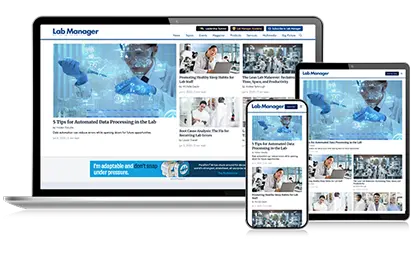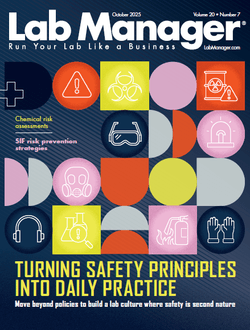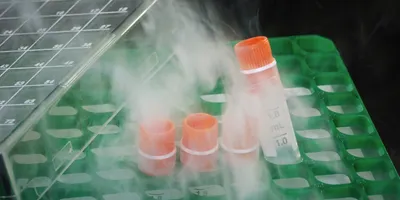SNS instruments enable researchers to "see" inside materials
Four years after a keystroke produced the first neutrons, the Spallation Neutron Source (SNS) has moved into a new phase, both as a neutron research facility and as one of the scientific community's foremost user centers for materials research. "We now have the world's most intense pulsed neutron source, a fact that by itself is very attractive to anybody who wants to use neutrons to investigate materials," says Stephen Nagler, chief scientist of ORNL's Neutron Scattering Science Division.
Adding to the facility's appeal is the realization that, with every new operating cycle, the SNS is putting more instruments with brand new capabilities online. Twelve instruments, some as large as houses, are currently available in or adjacent to the mammoth target building, with seven more under construction or in the process of coming online.
Users are flocking to the new instruments. Typically, once an SNS instrument becomes available, user requests for research time run about a factor of three greater than the amount of time actually available. Proposals for some of the newer instruments are running six or seven to one. While the perfect balance is elusive, the SNS staff closely monitor the nature and quality of the proposals as well as the ratio of accepted proposals. Just as a healthy ratio serves as an indicator that the instrument is attracting great science, a ratio that becomes too high could deter quality users from submitting proposals.
One of the newest and most popular SNS instruments is the VULCAN diffractometer. The reasons behind VULCAN's popularity—a new machine with unusual capabilities—are similar to those that make the SNS itself so attractive. VULCAN was designed to perform stress measurements on engineering components such as a turbine blade from a jet engine or the frame of a car. VULCAN is capable of "seeing" inside the material and making three-dimensional maps of the distances among atoms in critical sections. The maps enable scientists to determine if the atoms are being squeezed together or pulled apart, signs of stress and strain in the materials.
Studies similar to those conducted at VULCAN have been under way for years at the Residual Stress Facility at ORNL's High Flux Isotope Reactor. The research reactor generates a continuous beam of neutrons of various wavelengths. A larger volume of neutrons hitting the sample often translates into more data. However, to conduct stress and strain measurements, scientists can only use neutrons of one wavelength at a time while filtering out the rest. The extreme intensity of HFIR's neutron beam enables this technique to achieve good results even after filtering most of the neutrons. In contrast, VULCAN produces neutrons in very short bursts. Because the short-wavelength neutrons in the pulse travel faster and arrive sooner than those with longer wavelengths, neutrons of different wavelengths are not mixed together. The result is that all of the neutrons arriving at VULCAN can be used to take measurement samples. A bonus for VULCAN users is simple logistics. Because VULCAN is located in a separate and spacious building, the movement of large samples to the instrument, such as a section of aircraft wing, becomes much easier.
Nagler also views VULCAN as a good example of ORNL's efforts to broaden the neutron science user base. He points out that the application of neutrons to engineering studies was something that followed long after they were first used in areas such as solid state physics. Interest among engineers began with users examining topics like residual stress in materials. That initial interest has expanded to include the use of pulsed neutrons to investigate energy materials such as photovoltaics, fuel cell membranes and related devices. Nagler expects a continued increase in the number of users attracted to neutron science at the SNS for applied materials research. He also predicts a similar growth in other fields like materials chemistry. "There has been occasional work of this type in the past," Nagler adds, "but the SNS is attracting a much broader group of researchers to the field."
As awareness of the SNS and its capabilities grows, potential users are gradually realizing that the additional data obtained at the SNS positions them to perform experiments that would be impossible elsewhere. At the SNS, users have the twin advantages of working with instruments designed on the basis of knowledge gained from decades of experience at neutron facilities around the world, powered by a peak neutron flux ten times that of similar facilities in Europe and Asia. The difference is profound.
Users come first
To maximize access to these capabilities, 75 percent of the beam time on SNS instruments is dedicated to the general user program. Each instrument typically has one or two instrument scientists and a scientific associate whose roles are to ensure that instruments are operational when users arrive to conduct their experiments. "The support is not limited to instrument scientists and scientific associates," Nagler explains. "We have a group that specializes in maintaining samples in specialized environments, such as low-temperature, high-temperature or some special atmosphere or condition. Those who work for this group support each experiment as well." Because the SNS staff members are well known for their subject matter expertise, users frequently collaborate with them to take advantage of their ability to interpret data and set up difficult measurements. "This support is not a requirement," Nagler notes. "Some users prefer to do their own thing and get technical assistance only when they need it. We provide the support either way."
Research at the SNS is a round-the-clock operation. When scientists are awarded beam time, they are expected to work until their experiment is complete. The policy requires continuous support, with a "hall coordinator" in the experiment hall 24 hours a day, seven days a week. If users are running an experiment and encounter a problem, the hall coordinator will either fix the problem or identify those who can.
Because the SNS is the first U.S. neutron facility built in decades, ORNL has made a priority of making the user experience successful. Nagler makes clear that, despite the facility's initial success, the SNS staff is not resting on its laurels. "Every time a user runs an experiment, he or she is asked to provide feedback on how things went and to critique what could have been better," he says. "The feedback is taken seriously. Users are a critical part of our mission, and we are constantly looking for ways to improve our operation."
Source: Oak Ridge National Laboratory
SNS instruments enable researchers to "see" inside materials
Four years after a keystroke produced the first neutrons, the Spallation Neutron Source (SNS) has moved into a new phase, both as a neutron research facility and as one of the scientific community's foremost user centers for materials research. "We now have the world's most intense pulsed neutron source, a fact that by itself is very attractive to anybody who wants to use neutrons to investigate materials," says Stephen Nagler, chief scientist of ORNL's Neutron Scattering Science Division.
Adding to the facility's appeal is the realization that, with every new operating cycle, the SNS is putting more instruments with brand new capabilities online. Twelve instruments, some as large as houses, are currently available in or adjacent to the mammoth target building, with seven more under construction or in the process of coming online.
To continue reading this article, sign up for FREE to

Membership is FREE and provides you with instant access to eNewsletters, digital publications, article archives, and more.










